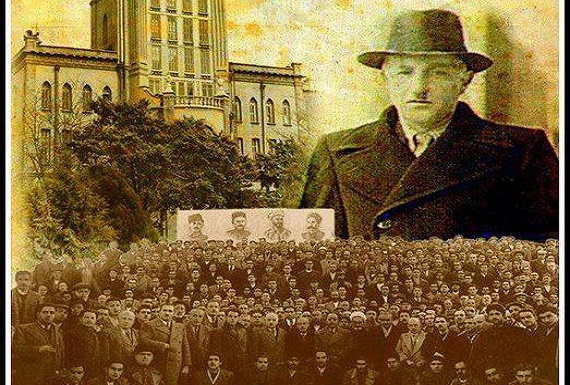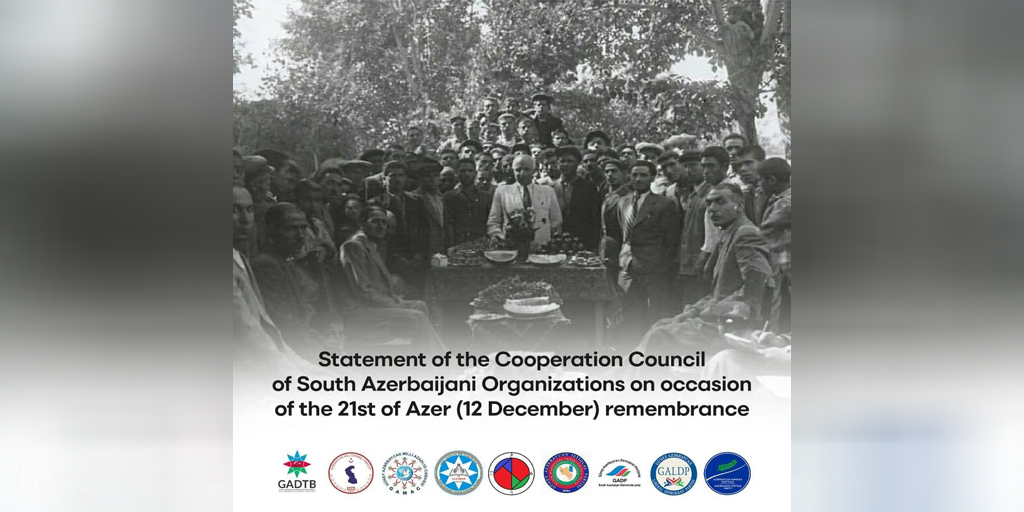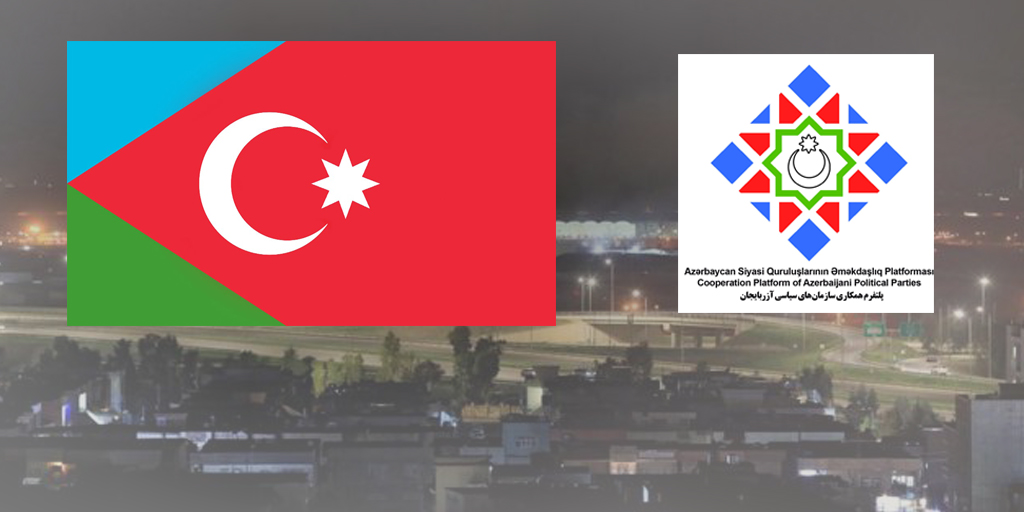Happy 21 Azar “The South Azerbaijan People’s Republic day (1945-1946)” (Photo Gallery )

Araz News: The 21-Azar (1324/1945) is an important day in the history of Iranian Azerbaijanis. At that point in history, Southern Azerbaijanis established their autonomous national Parliament (Milli Majlis) under the leadership of Azerbaijan Democratic Party “Demokrat Firqesi”, only to be toppled a year later (1325/1946) by the brute military forces of the central government (Pahlavi’s government). Thousands of Southern Azerbaijanis were either killed, executed or forced to flee to the neighboring countries and hope for democracy and self-determination was vanished.
In Southern Azerbaijan, the Turkish language was banned from schools and government offices. Since the Turkish language press shared the same fate, there were no Turkish newspaper or magazines published. Students were forced to speak in Persian at schools, in the face of using their mother language they were fined and whipped by their teachers or principles.
The government-sponsored propaganda portrayed Turks as barbarians. Turks who wanted to climb up in state hierarchy had to deny their ethnic background. In order to assimilate the Turks into Persian culture Tehran was discouraging deliberately investments in Azerbaijan by making it hard to obtain permission to set up any fundamental industry there. Even in the case of obtaining permission, the cooperation of banking system could not be expected. As a result, thousands of people had to leave their homeland and settle in Persian cities to make a living.
The economy was chaotic “In contrast to the majority of people who lived in abject poverty, there was a relatively small class of rich landowners and merchants” (Fatemi.p.79). The people suffered from enormous difficulties in obtaining their essential needs such as bread. In comparison to the other regions the cost of living was much higher in Azerbaijan. The discrimination reached a point where people in Azerbaijan started putting questions such as, ” While the sugar ratio in the capital is 1.5 kilos per month, why is the ration for Azerbaijanis no more than 400 grams, and that is not per month but rather, per season?” ( Atabaki. p. 86) . The political bureaucracy was corrupt and the gendarmerie was nothing more than an instrument in the hands of landowners to suppress the peasants. The appointed officials from Tehran were more worried about their pockets than solving people’s problems ” Officials from the south find Tabriz and Reza’iyeh (Urmu) nothing more than dull villages”, where they can make money and get back to Tehran, or anywhere down south”. ( Atabaki. p. 86). The workers had no rights. Not a single organization was allowed to defend their rights. Unions were outlawed. There was no freedom of speech; the press, and radio were controlled by the central government. “Azerbaijan was a microcosm of conditions existing in Iran” (Fatemi.p.79).
People who know the fundamentals of revolution would agree that the required subjective and objective conditions were ripe for a revolution in Azerbaijan. But most of the Persian scholars, and their western counterparts not taking into account the above situation, and lessening the importance of socio-economic factors when it comes to the question of Azerbaijan, have tried to label the revolution of the Azerbaijanis as a Soviet-sponsored intrigue. It is also interesting to note that the Persian Liberal minded scholars have a tendency to portrait or paint themselves as ” INTERNATIONALISTS” when they are talking about other oppressed people around the world.
However, when it comes to the question of Turks in so called Iran, they put away their quasi internationalist musk and display their despicable racist inclination. It can be seen in almost all of the so-called progressive Persian media’s reaction during and after the formation of Azerbaijani Democratic Government. The following excerpt from the newspaper Iran-e Ma (Our Iran) is just an example:
In the view of our writers, it is perfectly obvious that the local language of Azerbaijan deserves respect. However, in our opinion the local language of Azerbaijan can definitely not be the national language of our Azerbaijani fellow countrymen because we do not consider the people of Azerbaijan to be a nation separate from our other fellow countrymen and ourselves ( Atabaki, p. 104)
The Autonomous Government of Azerbaijan (1945-1946)
“On September 3, 1945, the Azerbaijan Democratic Party (ADP) was founded in Tabriz. Two days later, the Azerbaijan Province Committee of the Iran Peoples Party (Tudeh) merged with it” (Nissman. D. P.33).
Aware of Tehran’s desire to crack down on the revolution in Tabriz, the Central Committee of the Azerbaijan Democratic Party called on the people to take up arms to defend their own government on November 9, 1945. Shortly thereafter, the party started setting up volunteer paramilitary units called “Fedayi”.
On November 23, 1945, its (ADP) Central Committee issued a proclamation defining its aim as the complete autonomy of Azerbaijan (Lencezowski, p. 288). On December 12 the Provincial National Assembly was formally inaugurated. It was composed of 101 deputies (Lencezowski, p. 289). On its first day of power, the National Parliament of Azerbaijan in Tebriz challenged the puppet government of the Shah in Tehran by declaring the Autonomous Government of Azerbaijan and designating a government under the “premiership” of Mir jefer Pisheveri designed to safeguard the autonomy of Azerbaijan.
The government declared that it had no intention of breaking away from Iran. Unlike the Soviet Azerbaijan, it did not follow a massive nationalization program. Private property was respected. A people’s army was formed from the local militia. Turkish became the official language of the state. The government also declared that it would distribute government-owned land among the peasants, as well as that of the reactionary landlords who collaborated with the enemy and fled the country. Universal suffrage was recognized. Within a short period of time, schools were set up, the first medical school was opened in Tabriz, the roads were repaired, and an eight-hour workday was introduced. Within one year, the democratic government of Azerbaijan had done more good for Azerbaijan than Riza Khan had done in the last 20 years of his reign.
The Azerbaijani crisis was the first to come before the Security Council on January 19, 1946. “Seyyed Hassan Taqizadeh, head of the Iranian delegation to the General Assembly and the Iranian Ambassador to England, was instructed by Hakimi to refer Iran’s complaint to the Security Council “(Fatami, p.96). Tehran was concerned about Soviet political support for the autonomous government of Azerbaijan.
Tehran’s inability to suppress Azerbaijan prompted it to start negotiations with Tabriz. It also used diplomatic and economic tools to achieve its goal of eradicating the government in Tabriz. As all dictators do in the time of weakness, Tehran partially gave in to the Azerbaijani’s demands on June 1946 by signing a 15-point agreement, which recognized some of the Azerbaijani’s demands. By appeasing Russia’s demand of joint exploration of oil in the northern provinces and also pressuring them to evacuate their army through diplomatic means on the land which had the U.S.A and UK’s support, finally the Soviet forces started withdrawing from Azerbaijan on March 24, 1946. The evacuation was completed by May 09, 1946. Aware of Russia’s behind the scene negotiations with Tehran, the Pisheveri government started looking West of the border for help. “In an emergency meeting of the ” National Parliament”, the Prime Minister Pisheveri told the deputies there were three alternatives left for the government:
Becoming united with Turkey;
Declaring independence if Turkey was to help them become recognized by the foreign countries (this option was to be taken if the first one was thought of affecting Turkey’s diplomatic relations negatively);
Continuing their struggle within Iran directly if Turkey refused the first two options.
Three emissaries were sent to Ankara to discuss the situation with the Prime Minister of Turkey Ismet Inonu. After staying for three month in Ankara and giving all the military secrets of Azerbaijani army to Turkish officials not only they were denied a meeting with the Prime Minister but also they were sent back to Tehran where they subsequently were executed” ( Oren, Mehmet. p.122).
Finally, Tehran having the U.S and UK’s military help and getting green light from Moscow and Ankara attacked Azerbaijan from three sides. On December, 12,1946 the autonomous government succumbed. On their way Iranian army committed horrible crimes. The Turkish schoolbooks were set on fire and according to some accounts more than 50.000 people were killed.
BY- southaz



















